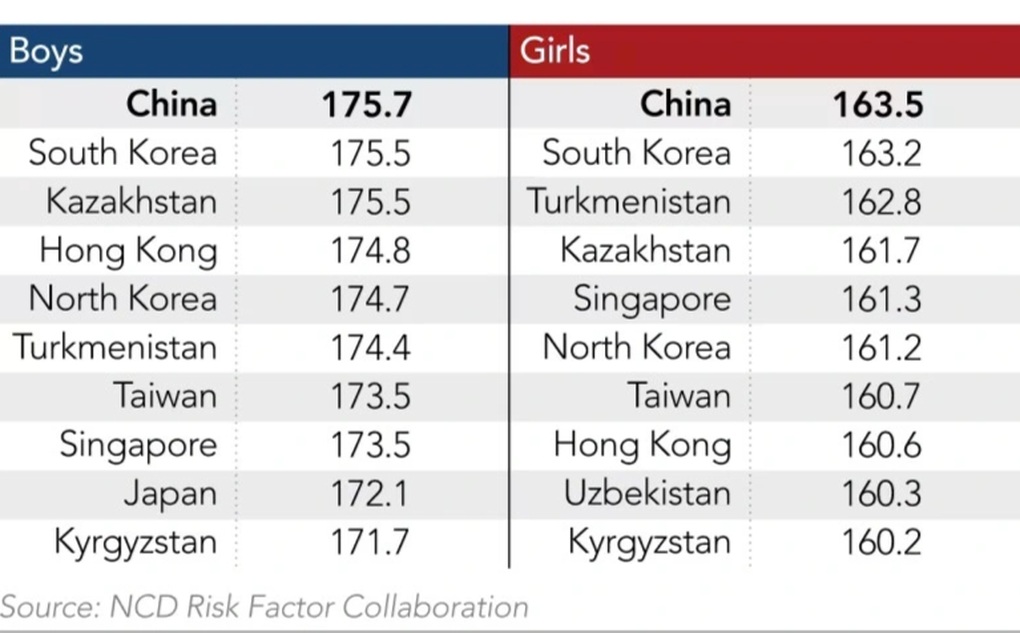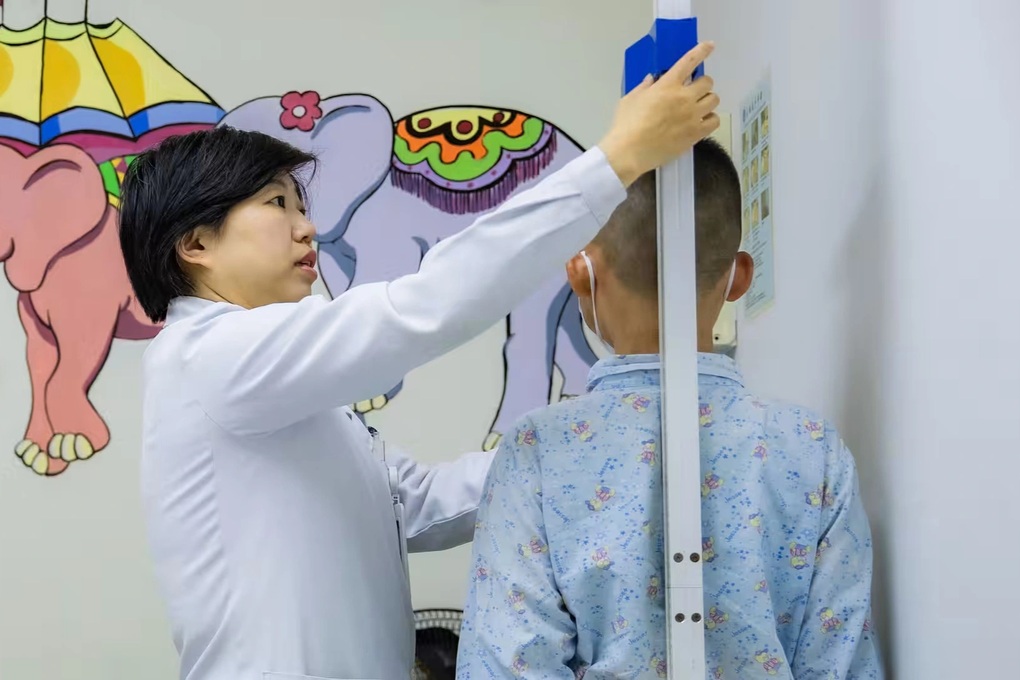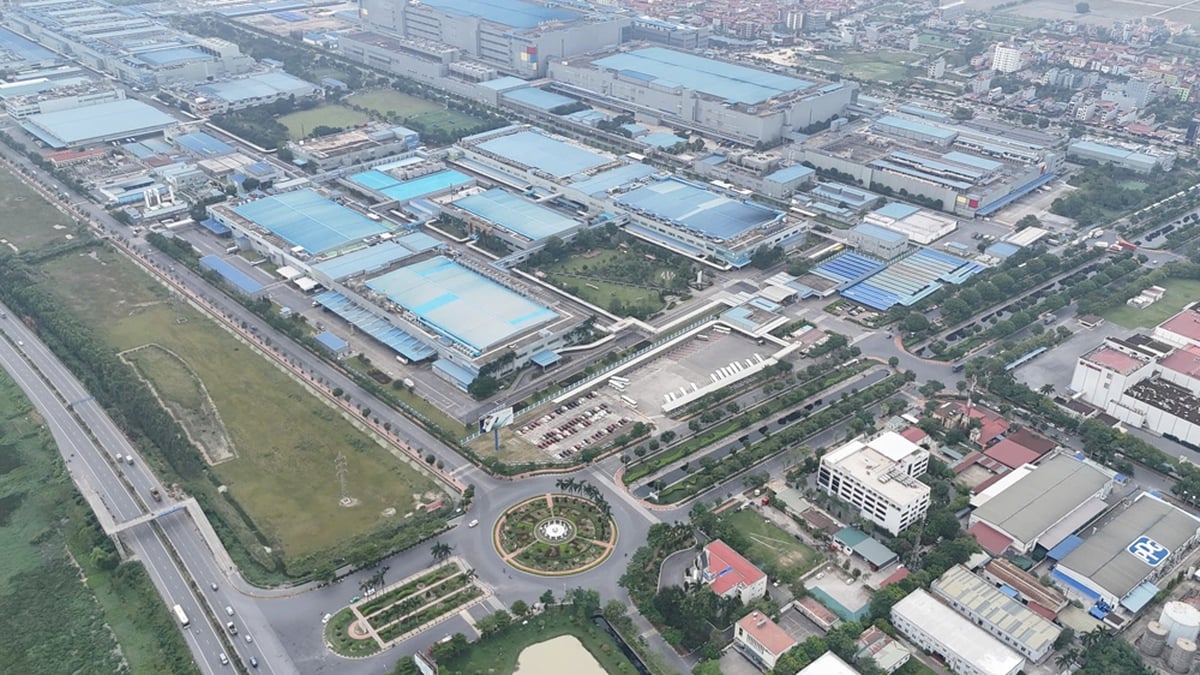Li Tai, a filmmaker living in central China, has always worried about his son's height. He, himself of below-average height, fears that his son might be bullied or have trouble finding a partner in the future.
Determined to change their son’s future, Li and his wife went to a doctor who prescribed growth hormone treatment. Although only 5 years old, their son received daily hormone injections, combined with a strict sports training regimen.
After a year and a half, the results surprised the Li couple. From a boy who was rated lower than 97% of his peers, their son was taller than half of his friends.
However, the child began to have nosebleeds. Although the doctor confirmed that this condition was not related to the medicine, the Li couple still couldn't help but worry. In addition, the cost of this treatment was not small, up to 130,000 yuan (about 18,000 USD, equivalent to nearly 480 million VND).
Still, Li is optimistic about the future. He hopes his son will not only reach his ideal height, but also marry a girl of similar height, thereby "improving the family's genetics."

Height-increasing exercises are included in physical education classes at Chinese schools (Photo: Nikkei Asia).
Li Tai’s family story is not uncommon in Asian countries today, especially in China and South Korea. Although the height of children in these two countries is among the highest in the region, many parents are willing to invest a large amount of money in height-enhancing therapies for their children, such as hormone injections and even leg-lengthening surgery.
Height is never enough
According to 2019 statistics from the NCD Risk Factor Collaboration, a global network of scientists affiliated with the World Health Organization, the height of Chinese and Korean youth ranked first and second in Asia, respectively.
Specifically, the average height of young Chinese men is 175.7cm, while that of Koreans is 175.5cm. For women, the average height is 163.5cm for Chinese people and 163.2cm for Koreans.

Ranking of the top 10 countries and territories in Asia by gender by NCD Risk Factor Collaboration.
Although children in these countries are achieving outstanding heights, their parents are never satisfied with this.
In a survey of 4,000 people conducted by the China Foundation for Children and Youth last year, more than three-quarters of respondents said their children aged 3 to 17 were shorter than they wanted them to be. On average, parents of 16- and 17-year-olds thought their boys should be 1.8m tall and their girls 1.69m tall.
"Chinese parents tend to compare their children's height with that of children of the same age. Even if their children's height is standard, many parents still want their children to be taller," said Lu Wenli, a pediatric endocrinologist at Shanghai Ruijin Hospital.
With that desire, many parents rush to take their children to pediatric endocrinology centers to get prescriptions for height-enhancing drugs. In most cases, doctors recommend some lifestyle changes regarding diet and exercise. In addition, children are also given additional functional foods to increase effectiveness.
In addition, parents also seek growth hormone injections for their children.
In Korea, this method is covered by insurance if the child is diagnosed with a developmental disorder. For normal children, their parents have to pay about 100,000 won (equivalent to 1.8 million VND) for each injection.
In China, this method is only prescribed for children with growth hormone deficiency, but very few cases are covered by insurance. The annual cost of treatment for the most common type of human growth hormone is currently 60,000-70,000 yuan/year (about 220-256 million VND).
However, according to doctors, long-term uncontrolled use of growth hormones can cause risks such as increased intracranial pressure, scoliosis and blood sugar disorders. Some reports even suggest that the use of growth hormones is related to the risk of cancer. Therefore, experts emphasize that children using hormones need to be closely monitored medically.
Some parents are even willing to have their children undergo leg lengthening surgery at a very young age, even though the procedure is banned in China.

Every week, Dr. Li's clinic receives and treats about 400-500 children with height problems (Photo: Nikkei Asia).
Obsession leads to long-term consequences
According to Professor Zhang Xinhui, Beijing Sport University, this trend can exacerbate social inequality. A child growing up in a well-off family can have their height intervened early, giving them an advantage in finding a spouse and a high-paying job in the future.
In addition, focusing too much on height-increasing functional foods can lead to false advertising and the sale of fake functional foods. In March this year, the Korean Ministry of Food and Drug Safety discovered 259 cases related to functional food advertising that caused misunderstandings about the effectiveness of increasing height for children.
China’s obsession with height is partly due to the growing competition for partners and job opportunities. Research by Professor Zhang and Li Jianxin of Peking University also confirms that taller Chinese people are more likely to find partners and receive higher salaries.
"Height has now become an objective measure of a person's attractiveness in the marriage and job markets," said Mr. Zhang.
Job postings in China now often ask for height, even when height is irrelevant to the job. Typically, companies require applicants to be at least 1.6m tall.
This is also repeated in Korea where height has become a mandatory requirement in many professions.
Before 2007, men had to be at least 167 cm tall and women had to be at least 157 cm tall to become police officers. Many men were even exempted from military service in South Korea if they did not meet the minimum height.
Source: https://dantri.com.vn/suc-khoe/am-anh-chieu-cao-nhieu-cha-me-o-chau-a-ep-tre-5-tuoi-tiem-hormone-20250815104303369.htm






















![[Photo] General Secretary To Lam attends the inauguration ceremony of the "Uncle Ho in Tan Trao" Monument](https://vphoto.vietnam.vn/thumb/1200x675/vietnam/resource/IMAGE/2025/8/14/679bb11e3ce14b2aabc31a9c8676d269)




![[Photo] Binh Khanh Bridge Ho Chi Minh City is ready to reach the finish line](https://vphoto.vietnam.vn/thumb/1200x675/vietnam/resource/IMAGE/2025/8/14/b0dcfb8ba9374bd9bc29f26e6814cee2)

![[Photo] Firmly marching under the military flag: Ready for the big festival](https://vphoto.vietnam.vn/thumb/1200x675/vietnam/resource/IMAGE/2025/8/14/cf4faa548c074723b2d318f687838d75)

![[Photo] The special solidarity relationship between Vietnam and Cuba](https://vphoto.vietnam.vn/thumb/1200x675/vietnam/resource/IMAGE/2025/8/15/5f06c789ab1647c384ccb78b222ad18e)

































































Comment (0)